Modan Tailleur
LS2N, Nantes Univ - ECN, LS2N - équipe SIMS
Sound Scene Synthesis at the DCASE 2024 Challenge
Jan 15, 2025Abstract:This paper presents Task 7 at the DCASE 2024 Challenge: sound scene synthesis. Recent advances in sound synthesis and generative models have enabled the creation of realistic and diverse audio content. We introduce a standardized evaluation framework for comparing different sound scene synthesis systems, incorporating both objective and subjective metrics. The challenge attracted four submissions, which are evaluated using the Fr\'echet Audio Distance (FAD) and human perceptual ratings. Our analysis reveals significant insights into the current capabilities and limitations of sound scene synthesis systems, while also highlighting areas for future improvement in this rapidly evolving field.
Challenge on Sound Scene Synthesis: Evaluating Text-to-Audio Generation
Oct 23, 2024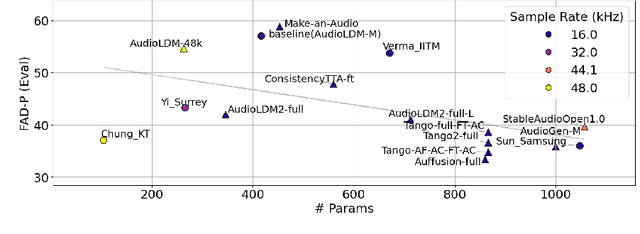

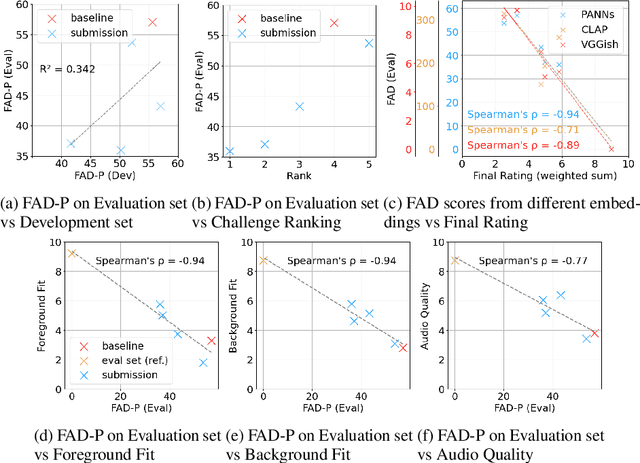

Abstract:Despite significant advancements in neural text-to-audio generation, challenges persist in controllability and evaluation. This paper addresses these issues through the Sound Scene Synthesis challenge held as part of the Detection and Classification of Acoustic Scenes and Events 2024. We present an evaluation protocol combining objective metric, namely Fr\'echet Audio Distance, with perceptual assessments, utilizing a structured prompt format to enable diverse captions and effective evaluation. Our analysis reveals varying performance across sound categories and model architectures, with larger models generally excelling but innovative lightweight approaches also showing promise. The strong correlation between objective metrics and human ratings validates our evaluation approach. We discuss outcomes in terms of audio quality, controllability, and architectural considerations for text-to-audio synthesizers, providing direction for future research.
Machine listening in a neonatal intensive care unit
Sep 16, 2024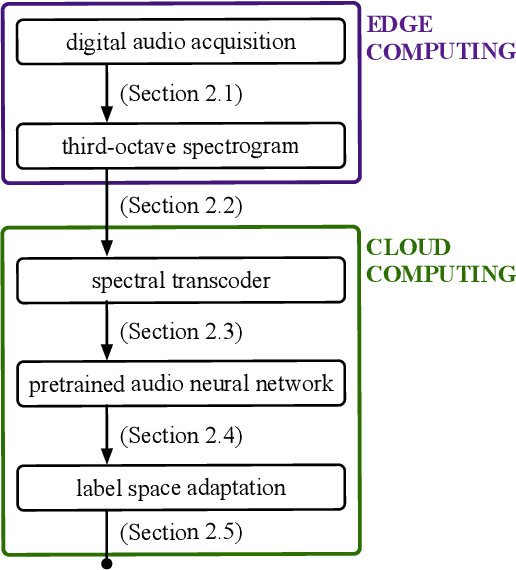

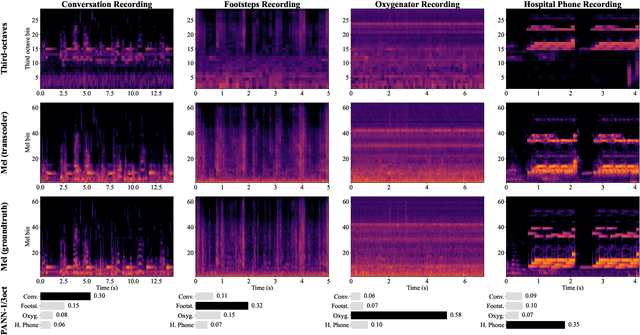

Abstract:Oxygenators, alarm devices, and footsteps are some of the most common sound sources in a hospital. Detecting them has scientific value for environmental psychology but comes with challenges of its own: namely, privacy preservation and limited labeled data. In this paper, we address these two challenges via a combination of edge computing and cloud computing. For privacy preservation, we have designed an acoustic sensor which computes third-octave spectrograms on the fly instead of recording audio waveforms. For sample-efficient machine learning, we have repurposed a pretrained audio neural network (PANN) via spectral transcoding and label space adaptation. A small-scale study in a neonatological intensive care unit (NICU) confirms that the time series of detected events align with another modality of measurement: i.e., electronic badges for parents and healthcare professionals. Hence, this paper demonstrates the feasibility of polyphonic machine listening in a hospital ward while guaranteeing privacy by design.
EMVD dataset: a dataset of extreme vocal distortion techniques used in heavy metal
Jun 24, 2024



Abstract:In this paper, we introduce the Extreme Metal Vocals Dataset, which comprises a collection of recordings of extreme vocal techniques performed within the realm of heavy metal music. The dataset consists of 760 audio excerpts of 1 second to 30 seconds long, totaling about 100 min of audio material, roughly composed of 60 minutes of distorted voices and 40 minutes of clear voice recordings. These vocal recordings are from 27 different singers and are provided without accompanying musical instruments or post-processing effects. The distortion taxonomy within this dataset encompasses four distinct distortion techniques and three vocal effects, all performed in different pitch ranges. Performance of a state-of-the-art deep learning model is evaluated for two different classification tasks related to vocal techniques, demonstrating the potential of this resource for the audio processing community.
Correlation of Fréchet Audio Distance With Human Perception of Environmental Audio Is Embedding Dependant
Mar 26, 2024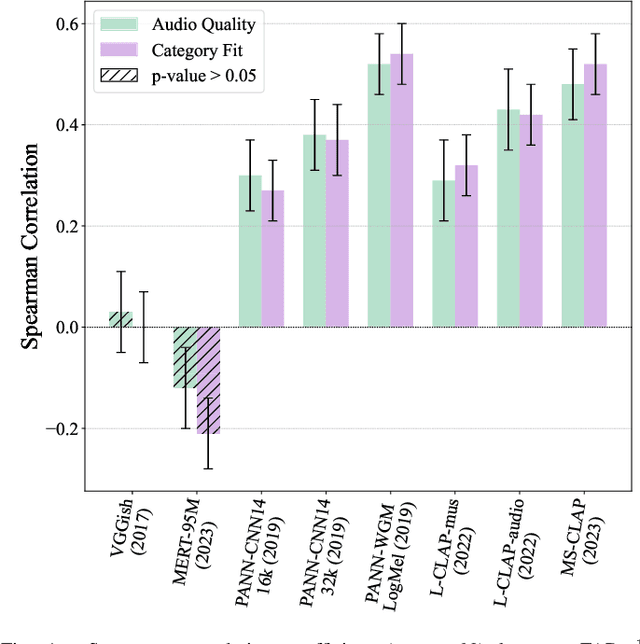
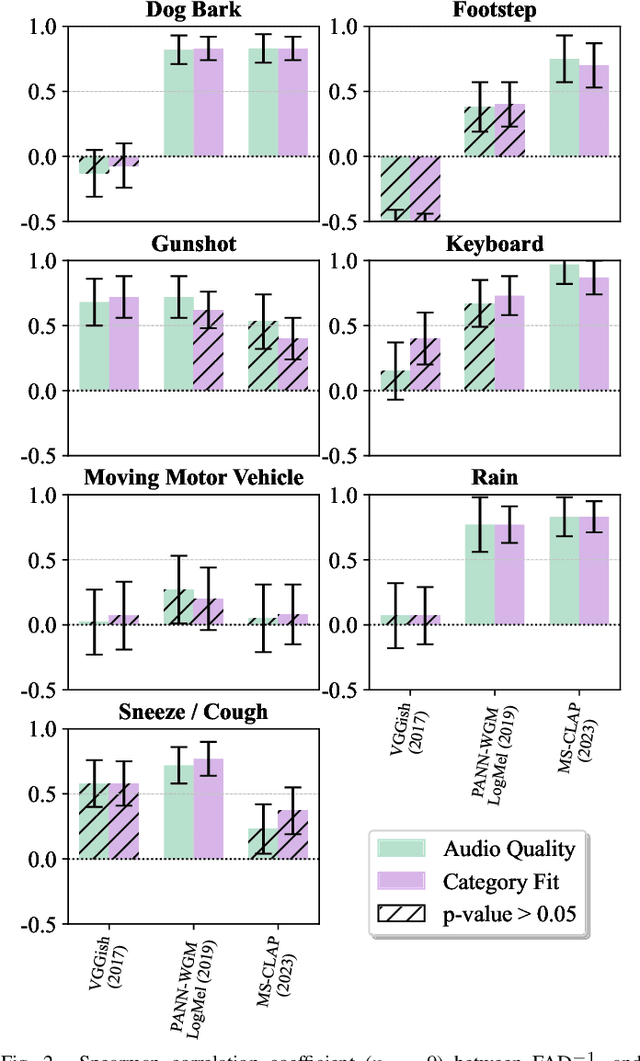

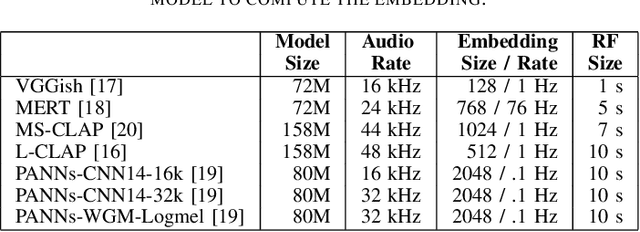
Abstract:This paper explores whether considering alternative domain-specific embeddings to calculate the Fr\'echet Audio Distance (FAD) metric can help the FAD to correlate better with perceptual ratings of environmental sounds. We used embeddings from VGGish, PANNs, MS-CLAP, L-CLAP, and MERT, which are tailored for either music or environmental sound evaluation. The FAD scores were calculated for sounds from the DCASE 2023 Task 7 dataset. Using perceptual data from the same task, we find that PANNs-WGM-LogMel produces the best correlation between FAD scores and perceptual ratings of both audio quality and perceived fit with a Spearman correlation higher than 0.5. We also find that music-specific embeddings resulted in significantly lower results. Interestingly, VGGish, the embedding used for the original Fr\'echet calculation, yielded a correlation below 0.1. These results underscore the critical importance of the choice of embedding for the FAD metric design.
Detection of Deepfake Environmental Audio
Mar 26, 2024


Abstract:With the ever-rising quality of deep generative models, it is increasingly important to be able to discern whether the audio data at hand have been recorded or synthesized. Although the detection of fake speech signals has been studied extensively, this is not the case for the detection of fake environmental audio. We propose a simple and efficient pipeline for detecting fake environmental sounds based on the CLAP audio embedding. We evaluate this detector using audio data from the 2023 DCASE challenge task on Foley sound synthesis. Our experiments show that fake sounds generated by 44 state-of-the-art synthesizers can be detected on average with 98% accuracy. We show that using an audio embedding learned on environmental audio is beneficial over a standard VGGish one as it provides a 10% increase in detection performance. Informal listening to Incorrect Negative examples demonstrates audible features of fake sounds missed by the detector such as distortion and implausible background noise.
 Add to Chrome
Add to Chrome Add to Firefox
Add to Firefox Add to Edge
Add to Edge